Walking in the dark heightens our senses and imagination. The rustle of leaves at the edge of the clearing sounds like a bear or moose but really a mouse is scampering across the dry leaves.
Accustomed to daylight, we heavily depend on our vision to determine what is happening in our surroundings. Once darkness falls, our vision is limited to that of a headlamp or the outlines created by the light of the moon.
Animals active at night depend on more than their vision to know what is happening in their surroundings. Nocturnal animals have at least one highly-developed sense. Special adaptations include big ears, large eyes, sensitive whiskers and keen noses.
Bats use echolocation (sound waves) to determine where prey is located and to navigate in the darkness. Raccoons have extremely sensitive fingers that help them locate crayfish and other invertebrates beneath stones in shallow water at night. Great gray owls can hear a vole tunneling through snow up to 60 feet away with their offset ears. Snakes can sense minute changes in temperature.
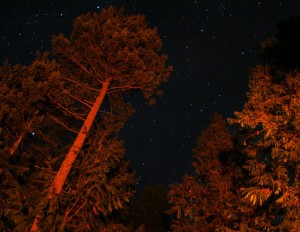
People need artificial light, like a campfire, to distinguish objects in the dark on a moonless night
More animals than we think are active at night–we just aren’t outside to see or hear them. Nearly half of all living vertebrates are nocturnal, including coyotes, mink, beaver, deer, river otters and wolves. In late winter, owls can be heard calling at dusk and in the spring and fall, some waterfowl call to each other as they migrate through the moonlit sky.
Being active at night is no safer than being active during the day. While prey can hide under the cover of darkness, their predators have developed keen senses to seek them out.
A mouse may hunker down during the day to remain out of sight of a hawk, which can still see the ultraviolet glow of the mouse’s urine in its trails. But at night the hawk’s domain becomes the owl’s domain and the mouse is no safer than during the day.
Nocturnal hunters have the advantage of not competing with diurnal (day-time) predators over the same resources. Swallows perform aerobatic maneuvers to catch flying insects during the day while bats rely on echolocation to capture night-time flyers.
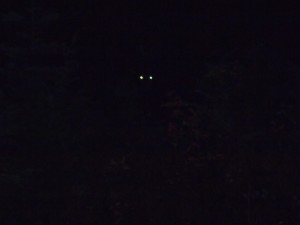
The body behind the eye shine can be difficult to identify unless a light illuminates it. In this case, car headlights eventually illuminated a black bear.
Many nocturnal animals still rely on sight to function at night but their vision isn’t the same as diurnal animals. The eyes of nocturnal animals contain higher concentrations of rod cells in the retinas to allow the creation of images in low light. However, the image is not as clear as those created by a higher concentration of cone cells in the eyes of diurnal animals.
Nocturnal animals, such as owls and flying squirrels, tend to have larger eyes to capture more light. An owl’s eyes are so large they cannot move in the socket and take up half of the owl’s skull.
To aid in creating images at night, some animals have a layer of reflective cells (called the tapetum lucidum) behind their retina that reflects back photons of light not captured by the rod or cone cells the first time through the eye. The reflective tapetum lucidum creates the eye shine we see when our headlights or headlamps shine in a nocturnal animal’s eyes.
The glowing pair of eyes staring back from the darkness of night could be as benign as a flying squirrel or porcupine, dangerous as an armed skunk, or as spine-tingling as the determined eyes of a cougar hunting for its next meal.

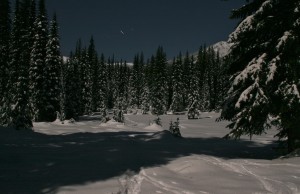
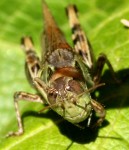
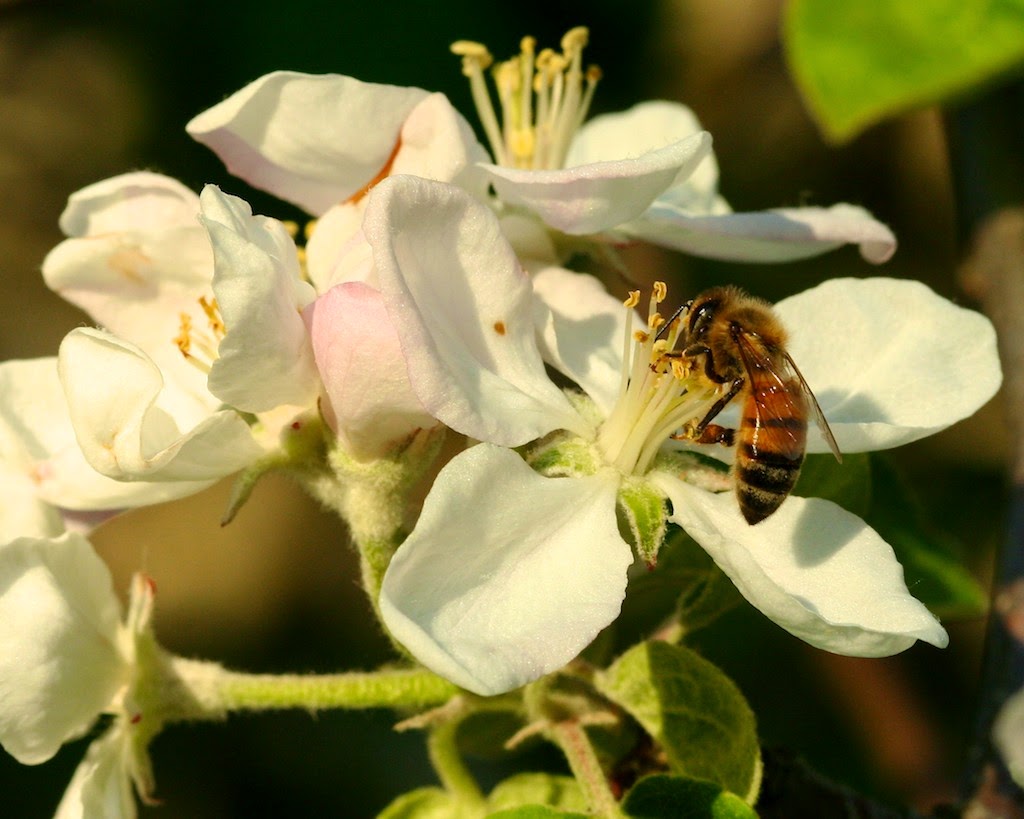
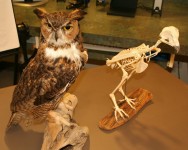
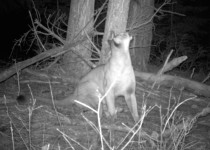
Wow amazing facts